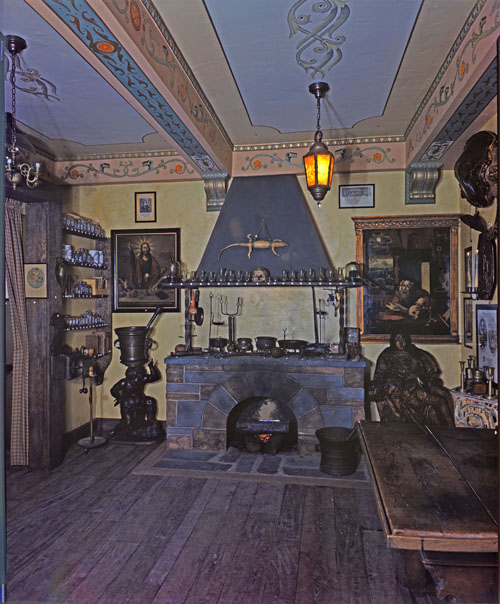Laboratory Equipment

Apothecary shops generally had two rooms, an outer or public area where the apothecary greeted customers, and a laboratory where chemical reactions were carried out and medicines were compounded. The Squibb laboratory has an assortment of equipment such as glass alembics for distillation, Florentine bottles, for the distillation of flower oils, test jars, and ceramic and copper crucibles, iron containers, trivets and skillets for preparing formulas.
 |
| Exhibit of anapothecary laboratory with mortars, pestles, alembics, retorts, crucibles, and skillets. |
The basic forms of the equipment, such as alembics and retorts like those found in the collection had not changed in centuries, nor had the process of distillation been significantly altered.* (Forbes) Indeed, many of the same utensils used in apothecary shops could be found in kitchens where small quantities of water or alcohol were distilled for home consumption.
Each substance; glass, ceramic or metal used to form a utensil had advantages and disadvantages, and therefore different materials were used for different processes. Glass, with its inert properties does not react or absorb chemicals like an unglazed earthenware bowl. However, glass is fragile, and shatters when exposed to extreme temperatures making it impractical for some applications. Pottery and metal are stronger but they both can absorb whatever materials they come into contact with and cause unwanted chemical reactions.
-
Florentine Bottle
- date made
- 17th-18th century
-
Microscope Set
- date made
- ca 1800
-
Nested Cup Weights
- date made
- 1652-1698
-
Microscope
- date made
- after 1750
-
Skillet
- date made
- 1678
-
Microscope
- date made
- 1730-1760
